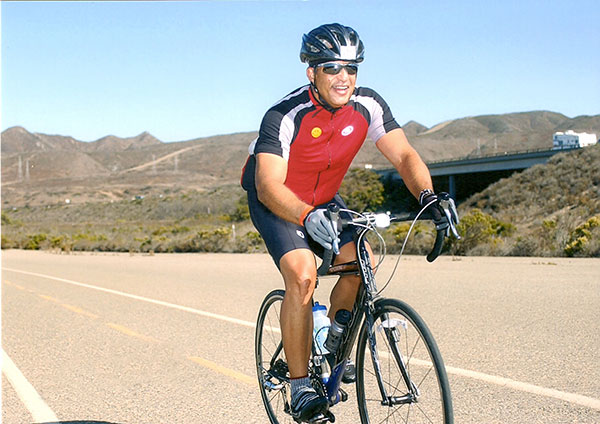In 2007, 55-year-old Angelo Esposito got a job at an insurance company. Like all new hires, he was told he had to get a physical before starting work.
“I thought I was in pretty good shape,” he says. “I felt okay, and I wasn’t experiencing any signs of stress.”
The truth, he learned, was just the opposite. Esposito failed every test for his age group. He couldn’t do 20 sit-ups. He couldn’t walk for five minutes on a stepper or for ten minutes on a treadmill. He couldn’t touch his toes. In the vertical-leap test, he was able to get only a few inches off the ground. His blood pressure was dangerously high, and his resting heart rate was 90 beats per minute. Even worse, Esposito learned he weighed 250 pounds—50 pounds more than he’d guessed.
“I was ashamed and angry,” he says. “I was in total denial.”
The real wake-up call came when he got his blood-test results. They showed that his “bad” cholesterol was through the roof and that he had a fatty liver. He was also in serious danger of becoming diabetic. “Those were the magic words,” he says. He couldn’t shake the childhood images of his grandmother, who’d struggled with and eventually died from the disease. “That was enough to galvanize me to activity,” he says.
Slowly, Esposito began turning over a new leaf. He focused on small changes—“little wins,” he says—rather than overwhelming goals. He started with tackling his 40-butts-a-day smoking habit. Then he turned his attention to exercise.
“By the end of the month, I’m going to be able to do 20 sit-ups,” he’d tell himself. “Or I’ll be able to walk up these steps all the way with out stopping.”
He also broke up his workout regimen into small bits throughout the day. That meant 30 minutes of exercise—maybe the treadmill, stationary bike, or elliptical—in the morning, and then 30 minutes at night. “It was the length of a sitcom. I could do that,” he says. As he got stronger, he gradually increased the time. Now he says he can exercise for two to three hours straight without feeling strain.
The biggest struggle was changing his eating habits. “You don’t realize, when you’re eating this stuff, how addictive it is,” he says. “The cravings for sugar and salt were the hardest to kick.”
To help refocus his eating, Esposito followed a plan he found on the Men’s Health Web site. It outlined what a man his age should eat each week and included a shopping list full of vegetables, fruit, and lean protein. By the end of each week, he knew, he had to finish the food in his fridge. “Not only was I not hungry,” he says, “there were times I felt so stuffed that I didn’t want to eat anymore, but I knew I had to.” Esposito followed the plan for four months—until he felt comfortable making food choices on his own.
In four years, he’s lost—and kept off—60 pounds and has just 15 percent body fat. He’s completed three Tour de Cure bike rides to raise money for diabetes research, and he has plans to do the DC Triathlon in June. Most important, he’s out of the danger zone for diabetes and he has reversed a lot of the damage to his body.
“I tell people to start small. Don’t try to eat an elephant in one bite,” he says. “And surround yourself with supportive friends and family. Those are the people who will help you through rough patches.”
Have an inspiring health or fitness story to share? Send details to wellbeing@washingtonian.com, and you could be featured in an upcoming column.
Subscribe to Washingtonian More >> Health | Top Doctors | Well+Being Blog
Follow Well+Being on Twitter



















